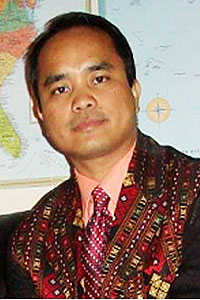India is set to step up its Act East policy this week with a visit to Myanmar of its External Affairs Minister Sushma Swaraj. It is the first high-level engagement with its immediate neighbour since the National League for Democracy (NLD) government took office on April 1.
Ms Swaraj is scheduled to arrive in Nay Pyi Taw tomorrow and will meet both President Htin Kyaw and the State Counsellor Aung San Suu Kyi, who also holds the post of foreign minister. The larger goal of the mission is to strengthen Prime Minister Narendra Modi's vision of India's Act East Policy, which was initially introduced by the Congress government as the Look East Policy.
As the largest democracy and an immediate neighbour, many had expected the visit to have happened sooner. Ms Swaraj's visit comes three weeks after that of Chinese Foreign Minister Wang Yi, the first foreign dignitary to visit Myanmar after the regime change, who met Ms Suu Kyi and Htin Kyaw on April 5 and 6 respectively.
In recent years, India and Myanmar have improved their bilateral ties on several fronts. And now the three specific areas where India needs to improve are the education sector, democratic institution building, and people-to-people relations.
In the education sector, the Indian government has launched initiatives, including the establishment of the Language Laboratories and Resource Centre, Myanmar Institute of Information Technology, Agricultural Research and Educational Centre, and the enhancement of the India-Myanmar Centre for Enhancement of IT Skills.
While the dividends of these initiatives may come slowly, the Indian government and educational institutions across India should attract students from Myanmar, perhaps by offering scholarships or through exchange programmes. At the moment, the number of students studying in Indian universities is almost non-existent. In addition, civil society groups and other private sectors should engage in providing vocational training that could generate concrete results in the short term.
The second area is democratic institution building which can be done in a number of ways. First, the Indian government should invite Myanmar politicians, who are new to democratic institutions and its practices, to give them first-hand experience as to how democracy works in a diverse and pluralistic society.
Such a programme could be organised under different settings. One possibility is that Myanmar politicians should be allowed to observe parliamentary proceedings when all parliamentarians across India are present. The other possibility is for the Indian universities and think tanks to organise intensive courses on theory and practices of democracy and on other important issues, both in India and Myanmar. The geographic proximity of the two countries is an advantage in this regard.
People-to-people relations are another essential element crucial for improving bilateral relations. Not only do India and Myanmar have a shared border, but the two countries are also home to millions of people from the same ethnic community, separated during the creation of India and Myanmar in 1947 and 1948. Examples are the Kachins, the Kukis, the Nagas and the Shans, who live side by side along the India-Myanmar border region.
The two countries also share a 1,624-kilometre boundary in four Northeast Indian states -- Arunachal Pradesh, Manipur, Mizoram and Nagaland, which are geographically contiguous to Myanmar.
Despite the geographical proximity, there is not much contact at the level of the common people. During Prime Minister Modi's visit to Myanmar in 2014, India agreed to construct 71 bridges along the road where the Indian buses would ply.
A bus service between Imphal and Mandalay, a distance of about 580 kilometres, which was initially planned to start in 2012-13, was only able to see its first trial run on December 9, 2015, which was flagged off by Manipur Chief Minister Okram Ibobi Singh. But the service has not continued.
Similarly, the first flights between Myanmar and Manipur were introduced in November 2013 but this did not continue either, due to immigration rules for incoming passengers, among others.
Though weekly direct Air India flights on the Delhi-Gaya-Yangon route and Golden Myanmar charter flights to India were launched in November 2014, the connectivity between the two countries remains very poor. Reliable road connectivity between the two countries, such as bus and train services, introduction of visa-on-arrival facilities at the border areas, regular flight services, and improvement of people-to-people relations are also essential for the success of India's broader Act East Policy as Myanmar is the gateway.
While China is India's natural competitor in Myanmar, the degree of influence India can have on Myanmar and the region largely depends on how she maintains people-to-people relations and its investment in the education sector. This is, however, not to downplay the importance of other sectors, including economic and security cooperation.
For its part, Myanmar should not only cooperate with India but also needs to implement measures and policies that would enhance bilateral ties. Among others, the NLD government, particularly its Foreign Minister Aung San Suu Kyi, should advise Myanmar's diplomats in New Delhi to be more open and accessible.
Nehginpao Kipgen is Assistant Professor and Executive Director of Centre for Southeast Asian Studies, Jindal School of International Affairs, OP Jindal Global University. He is the author of three books, including 'Democratisation of Myanmar'.
